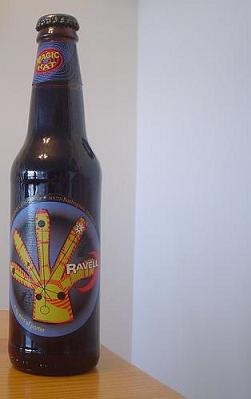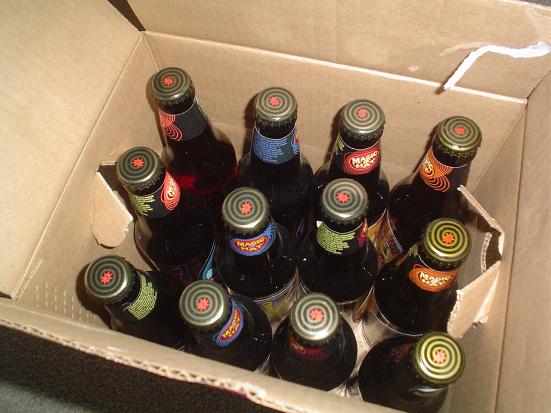Future Bowlers
Cory Doctorow Goes On Again
He does go on and, like creationist theory spouted to pentecostals, Cory Doctorow’s anti-digital rights management posts like the latest at Boing do quite well with the right audience – but he really does not get the reality of the law of copyright that he lives within. Science fiction is much more compelling than legal fiction when you get right down to it.
Earlier versions have wallowed in illustrastion without clear definition of the point being illustrated and, as a result, verges on Winerian anti-thought. Like most writers of fiction and software, he seems to like a world of absolutes and result, finding the practical, actual and traditional uncomfortable or, with today’s introduction of the “straw-man” retort, hypocritical. Unfortunately, all he is doing is slagging the way the world really works and saying how bad that it. That is not the deepest of analysis and really gets us nowhere. Consider this:
The final straw-man here is about whether DRM is “too restrictive” — whether it impinges on “reasonable expectations.” But that’s not what anyone in this fight actually is arguing about. It’s about the ability of the studios to change the rules of the game: whether the factors that influence your purchase today are subject to change later. Not whether the device is too restrictive today, but how restrictive it might someday become. What are the anti-features of the device, the technologies that can be used to remove features you enjoy today? That is the question, not “how restrictive is the DRM today?” If you believe in markets, in making money, in providing shareholder value, in all the cant of capitalism, then this is the question you should want to see uppermost in the minds of “consumers” when they make a purchase decision, because that is the only way that the market can “correct” DRM that overreaches.
People simply do not monitor the effectiveness of their purchases in this way. Think about it. The greatest success in terms of a digital device recently is the iPod which provides the user with a quality of sound greatly below that which was avalaible from the 80s Walkman and the 90s Diskman. But no one cares. The consumer buys because iPods are new and because everyone else is buying them. This is the sort of thing he does not think about – the disposability of most things, especially quality and performance in the mind of the western consumer. Yet it is a cornerstone of the market. And the wise vendor will use that to control and protect content will also maximizing sales. There is nothing new about this.
His ideal of consumer freedom to the point that owners of things should not be able to control their assets has gone mad with Doctorow, all in the name of doing whatever can be done with content regardless of whose content it is. This removes him from a realistic analysis which is compounded by his somewhat sweetly naive view of how people make decisions and how much they care about their digital assets. New economy thinking…and that is a slur.
Quiet
The office is quiet as I am it for staff at the start of today and today only lasts until noon. New Year’s Eve is best like this. Never been a greatest night ever even with the firmest of plans. My favorite bad New Year’s party was around 1986 when friends of friends of friends stiffed me for a bunch of tickets for something, hollaring ensured, mascara ran and I stayed in only to have Howie Chen show up and talk me into going out to the Flamingo after all to see I can’t recall who but maybe the Hopping Penguins. We leave the house around 11:50 and a cab is driving by. Cab stops. Drivers says “who the hell thinks they are going to flag a cab at ten minutes to miidnight on New Year’s Eve?” We say “who the hell is looking for fares?” Laughs and tips. After that, I remember Kenny who used to tend at the old Gingers was behind the bar and all was well.
When I was a kid, the folks had a party at the manse for the no-alcohol set but, being Scots, sherry is not no-alcohol and, when a large component of a trifle – actually called “sherry trifle” in our cookery – it is more of a food group. The aim New Year’s morning was to be the first kid up to gorge on homemade sausage rolls and sherry trifle at eleven years old and then lay around snoozing with the first inklings of buzzery. Speaking of buzzery, I read that Ian is getting drunk tonight and Rob spliffed up last night. Both have their reasons. Ian will be a Dad in 2005 and Rob learned that his daughter Hope had moved on to Laos after all, leaving the Thai beaches a day or two before the tragedy. Being a Dad involves a few stiff drinks on occassion it appears.
It has been a good year with us. The immigrations – ours in 2003 and my parents in 2004 – to the start of the big river from its mouth has paid off in many ways which I won’t bother listing except to say that being five minutes drive from a cardiac surgery unit was an extremely good call for my Dad. It is odd seeing the soles of his feet pink. It was a good year for family reunions and 2005 bodes well for that again. Getting back into soccer was one of the best things I have done for myself in years and many short trips with the kids the best we have done ourselves.
Being well, watered and together is good. There are few goods gooder.
Vermont: Ravell Porter, Magic Hat, South Burlington
 I had such high hopes for this post, comparing four of the brews in the South Burlington Vermont’s Magic Hat Winter mixed 12 pack. Then the holidays hit, then the guests arrived, then the defence of the bottles began. Right now I have maybe 30 singles of beer stuck away for later comment at a measured pace. Enough to get me into February easy – as long as I can keep the hands of others off of them. Eleven of the Magic Hats were sacrificed to that cause. All except one of their porters named Ravell.
I had such high hopes for this post, comparing four of the brews in the South Burlington Vermont’s Magic Hat Winter mixed 12 pack. Then the holidays hit, then the guests arrived, then the defence of the bottles began. Right now I have maybe 30 singles of beer stuck away for later comment at a measured pace. Enough to get me into February easy – as long as I can keep the hands of others off of them. Eleven of the Magic Hats were sacrificed to that cause. All except one of their porters named Ravell.
Porter has become one of my favorite styles, if only due to the uncertainly brewers have facing the problem of what it is supposed to taste like. Porter was one of the earliest industrial products and led to a capacity war from say 1790s to 1820s London which had a great effect on mass production of other goods as well as the local production of beer. By the mid-1800s, it had been replaced by other beers due to two discoveries – lagering and true pale malting. As always, when technologies change, tastes shift and the demand for this dark and sharp style faded to be replaced for a while by mild in England, followed by pale ales and then by the ubiquitous industrial lager-pop most drink today.

From my recollection of the others in the 12 pack, Magic Hat is a largely soft brewing firm. [Sleeman, by comparison, is a fairly hard brewing firm.] The yeast of the Ravell, sour and fruity, is in the front of the palate, framed by chocolate malt and then some hop bitterness. I would not call this a balanced or rich example of a porter but originally porters from what we know were not round and balanced. They should not be confused with nut brown ales anymore than with oatmeal stouts. They were from an era that saw brewing and storage occur in wood and that would impart sourness like we see today in many Belgian brews. Here are the stats on the brew from Magic Hat:
Our Odd Porter. A porter brewed with whole vanilla beans. Available whenever young William and father John deem it so.
Yeast: English Ale.
Malts: Pale, Crystal & Chocolate.
Hops: Warrior & Fuggles
Alcohol by Volume: 5.60%
Original Gravity: 1.056
Bitterness Units: 22
SRM: 63.6
The vanilla bean note is evident once noted but really creates as many issues as it resolves. It lies under the chocolate and hops bitterness and may feed the impression that the yeast is fruity. It is not, however, an overwhelmingly vanilla-esque ale. The effect is somewhat like the use of licorice in other dark ales, as in the Sinebrychoff Porter from Finland reviewed a few weeks ago. One beer advocatonian says it is too thin, which is fair comment.
Not the first porter I would grab but certainly worth discussing.
Tiger Balm and Ice Cream Sandwiches
I was so sensible. Even boring. Watched a bad bowl game. Sipped a teaspoon or two of sherry. Drifted to sleep listening to the KMOX in St. Louis countdown from the next time zone west. That is it! I under-did it.
Yet, getting up too early to catch the Liverpool v. Chelsea game it is still time for a milky tea. And rubbing the head with tiger balm. I’d put it on toast. For a time, when I were a lad, my cure was club soda washing down vanilla ice cream sandwiches. Then it was sardines and hot sauce after sticking to brews I made myself. Now it is under-doing it. And napping.
Quiet
The office is quiet as I am it for staff at the start of today and today only lasts until noon. New Year’s Eve is best like this. Never been a greatest night ever even with the firmest of plans. My favorite bad New Year’s party was around 1986 when friends of friends of friends stiffed me for a bunch of tickets for something, hollaring ensured, mascara ran and I stayed in only to have Howie Chen show up and talk me into going out to the Flamingo after all to see I can’t recall who but maybe the Hopping Penguins. We leave the house around 11:50 and a cab is driving by. Cab stops. Drivers says “who the hell thinks they are going to flag a cab at ten minutes to miidnight on New Year’s Eve?” We say “who the hell is looking for fares?” Laughs and tips. After that, I remember Kenny who used to tend at the old Gingers was behind the bar and all was well.
When I was a kid, the folks had a party at the manse for the no-alcohol set but, being Scots, sherry is not no-alcohol and, when a large component of a trifle – actually called “sherry trifle” in our cookery – it is more of a food group. The aim New Year’s morning was to be the first kid up to gorge on homemade sausage rolls and sherry trifle at eleven years old and then lay around snoozing with the first inklings of buzzery. Speaking of buzzery, I read that Ian is getting drunk tonight and Rob spliffed up last night. Both have their reasons. Ian will be a Dad in 2005 and Rob learned that his daughter Hope had moved on to Laos after all, leaving the Thai beaches a day or two before the tragedy. Being a Dad involves a few stiff drinks on occassion it appears.
It has been a good year with us. The immigrations – ours in 2003 and my parents in 2004 – to the start of the big river from its mouth has paid off in many ways which I won’t bother listing except to say that being five minutes drive from a cardiac surgery unit was an extremely good call for my Dad. It is odd seeing the soles of his feet pink. It was a good year for family reunions and 2005 bodes well for that again. Getting back into soccer was one of the best things I have done for myself in years and many short trips with the kids the best we have done ourselves.
Being well, watered and together is good. There are few goods gooder.
After Storm
After a day of heavy rain and strong wind, this was quite the sight leaving work.
Last of the Speakeasies?
 Big news from a little place. One of the last vestiges of the prohibition-era speakeasies of the first half of the last century has left the scene in Canada’s smallest province.
Big news from a little place. One of the last vestiges of the prohibition-era speakeasies of the first half of the last century has left the scene in Canada’s smallest province.
CBC PEI reports:
In 1900 Prince Edward Island became the first province to ban alcohol. It was the last to end prohibition almost 50 years later. However, there continued to be dozens of bootleggers around the province…
It seems Charlottetown’s bootleggers have raised the white flag, choosing to close their illegal establishments in the face of tough new legislation passed by the Binns government. The bootleggers run illegal bars in homes. The houses are gutted, a bar is put in, and the people who run them resell liquor and beer. They don’t have liquor licences, and don’t conform to any provincial or municipal laws. They’ve been raided, railed against and reviled. But mostly, they’ve been tolerated, selling booze for much cheaper prices than legal lounges and nightclubs. That’s until this past weekend, when the doors of the known bootlegging establishments in Charlottetown were suddenly locked.
The writing has been on the wall for these illegal bars – one of which is illustrated as shown on the CBC PEI website – for a few years since a man died at a table and was not detected as being dead for some time. It is interesting to note, however, that on the main street of Ogdensburg, NY, one of the last holdouts of British North America in what is now the eastern USA, these sorts of small home-sized bars do operate under license as one might also see in St. John’s Newfoundland. With any luck they will become similarly licensed in PEI but that may destroy some of the attraction to their customers who took advantage of after-hours drinking and unregulated low pricing.
Of somewhat finer interest is the use of “bootlegger” in PEI for an illegal bar. Growing up in Nova Scotia it meant an illegal retailer only.

